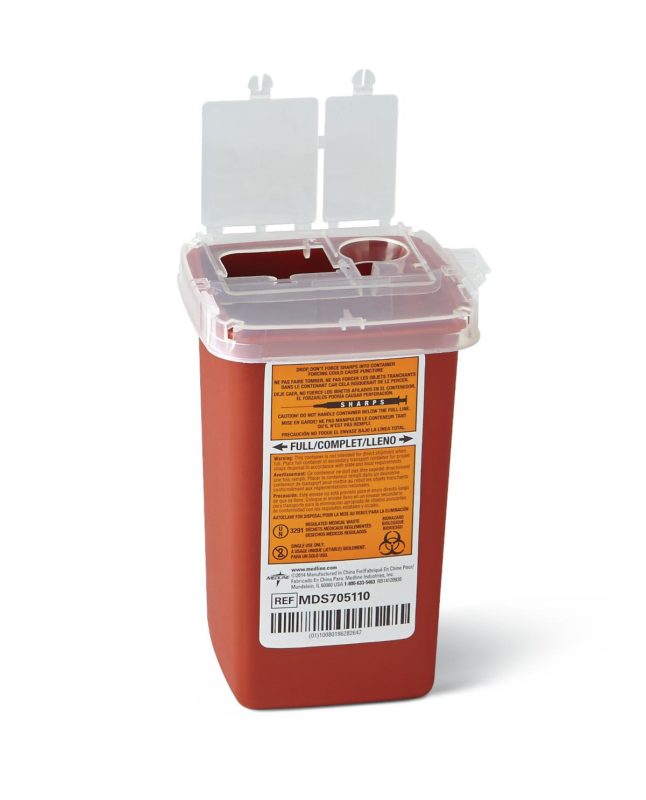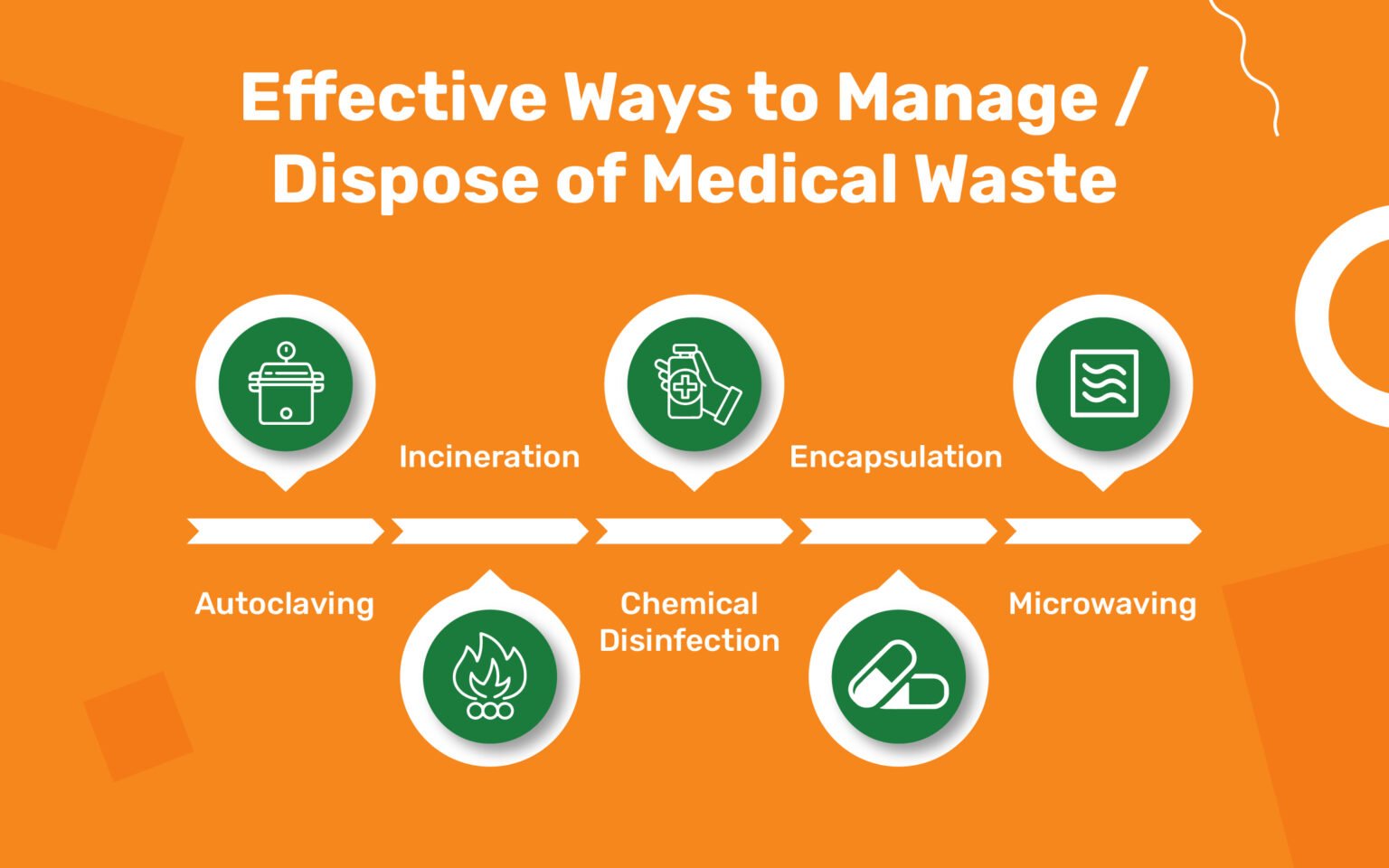Medical Waste Removal Proficiency: Where Service Quality Satisfies Health And Wellness Specifications
Medical Waste Removal Proficiency: Where Service Quality Satisfies Health And Wellness Specifications
Blog Article
Keep Ahead of Regulations: Specialist Advice on Medical Waste Disposal
In a world where the health care sector is continuously progressing, it is essential for clinical centers to stay ahead of laws when it comes to the appropriate disposal of medical waste. From understanding the various groups of medical waste to implementing the right collection and segregation techniques, this discussion will certainly offer workable suggestions and beneficial understandings to assist centers remain ahead of regulations in the ever-changing landscape of medical waste disposal.
Understanding Clinical Waste Categories
Understanding clinical waste groups is essential for correct disposal and monitoring in health care facilities. Clinical waste refers to any kind of waste produced by healthcare activities that might pose a threat to public health and wellness or the atmosphere. It is crucial to classify clinical waste precisely to guarantee its safe handling, treatment, transport, and disposal.
There are numerous classifications of medical waste that health care centers need to be acquainted with. The most common categories consist of contagious waste, pathological waste, sharps waste, pharmaceutical waste, and chemical waste. Each category has particular guidelines and regulations for its proper administration and disposal.
Infectious waste consists of materials contaminated with blood or various other bodily liquids, such as gloves, dress, and research laboratory societies. Pathological waste describes human cells, organs, or body parts that require special delivery and disposal. Sharps waste includes made use of needles, syringes, and other sharp objects that can create injury and transmit infections. Pharmaceutical waste makes up run out, extra, or contaminated medications that require careful handling and disposal. Finally, chemical waste consists of solvents, disinfectants, and other chemical substances utilized in healthcare facilities.
Remaining Up-To-Date With Regulatory Modifications
Remaining current with regulatory adjustments is critical for health care facilities to ensure conformity and appropriate management of medical waste disposal. medical waste removal services. With laws constantly progressing, it is important for healthcare centers to stay updated to stay clear of penalties, fines, and prospective injury to the atmosphere and public health and wellness
To remain in advance of governing modifications, health care centers ought to develop a system for surveillance and tracking updates. This can be done by signing up for regulatory newsletters, attending workshops and seminars, and proactively joining industry associations. Furthermore, facilities ought to designate a team member or team liable for staying informed and sharing info to appropriate stakeholders.
Normal communication with regulatory firms is additionally crucial. Medical care facilities should develop connections with neighborhood, state, and federal firms to guarantee they understand any kind of modifications in regulations that may influence their waste monitoring methods. This can be done via normal conferences, engagement in public remark periods, and positive involvement with regulative firms.
Moreover, healthcare facilities should consider partnering with waste administration firms that concentrate on medical waste disposal (medical waste disposal services with WasteX). These companies are often fluent in the current regulations and can provide assistance and support to ensure conformity
Applying Proper Collection and Segregation Methods
To properly handle medical garbage disposal, health care centers must establish proper collection and segregation approaches in accordance with regulative guidelines. Carrying out these methods ensures the risk-free handling and disposal of possibly unsafe products, shields the setting, and lessens the threat of injuries and infections to health care workers and the public.
Proper collection and segregation techniques involve making use of assigned containers and labeling systems. Health care centers must provide plainly identified containers for different types of clinical waste, such as sharps, contagious waste, pharmaceutical waste, and non-hazardous waste. These containers must be color-coded and plainly significant to stay clear of confusion and advertise simple recognition.
Additionally, healthcare centers need to train their staff on the right procedures for gathering and segregating medical waste. This consists of informing them on the various sorts of waste, the appropriate containers to make use of, and the importance of adhering to policies and standards. Normal training sessions and refresher course courses should be carried out to ensure that employee continue to be updated on finest practices.
Furthermore, medical care facilities should develop a system for normal collection and disposal of clinical waste. This may entail partnering with qualified waste monitoring companies that focus on medical waste disposal. These companies will certainly make sure that the gathered waste is transferred and thrown away in compliance with governing requirements.
Choosing the Right Disposal Methods

Incineration is one of one of the most common and efficient methods for throwing away specific kinds of clinical waste, such as pathological waste and sharps. It entails the controlled burning of waste at heats, decreasing it to ash. Incineration can launch unsafe contaminants right into the air and add to air pollution.

Chemical treatment entails the usage of chemicals to decontaminate and neutralize the waste. Microwave therapy utilizes microwave power to heat and disinfect the waste.
Making Sure Conformity With Documentation and Training
After carefully considering the ideal disposal techniques for clinical waste, health care facilities have to ensure conformity with guidelines and reduce environmental effect by implementing reliable documentation and training procedures. This step is crucial in maintaining a lasting and risk-free atmosphere for both health care employees and the public.

Training is equally vital in making certain compliance with anonymous regulations. Medical care workers that manage clinical waste should get appropriate training on waste partition, taking care of, and disposal procedures. This training should cover subjects such as the proper usage of personal safety tools, identification of various sorts of waste, and the correct disposal methods for each waste category. By offering extensive training, healthcare centers can empower their personnel to make enlightened choices and lessen the threat of incorrect waste disposal.
Conclusion
In final thought, staying in advance of regulations in medical waste disposal is critical for health care centers. medical waste removal services. Recognizing the different classifications of medical waste, remaining great site updated with governing changes, executing correct collection and partition techniques, picking the proper disposal methods, and guaranteeing conformity via documentation and training are all vital steps. By adhering to these standards, medical care organizations can successfully dispose and take care of of medical waste in a liable and secure manner
From recognizing the various groups of clinical waste to applying the appropriate collection and segregation methods, this conversation will offer actionable tips and useful understandings to assist centers stay ahead of guidelines in the ever-changing landscape of medical waste disposal. - medical waste disposal services with WasteX
The most common categories consist of infectious waste, pathological waste, sharps waste, pharmaceutical waste, and chemical waste. Health care facilities must offer plainly classified containers for various kinds of clinical waste, such as sharps, contagious waste, pharmaceutical waste, and non-hazardous waste. Healthcare centers need to establish an extensive system to record and track all aspects of medical waste disposal, including kinds of waste created, amounts, and disposal methods utilized. Healthcare employees that manage medical waste needs to receive proper training on waste partition, taking care of, and disposal treatments.
Report this page